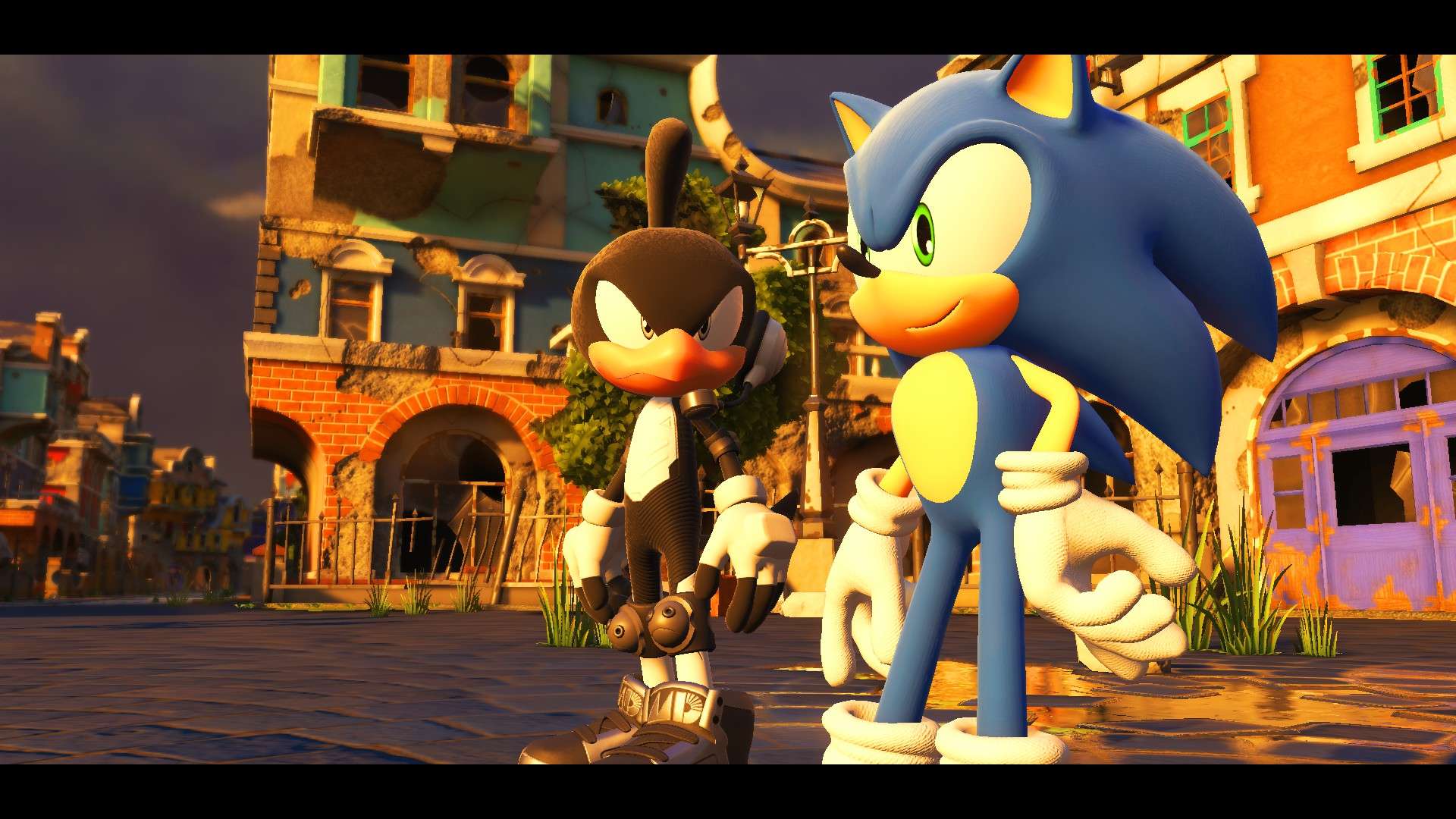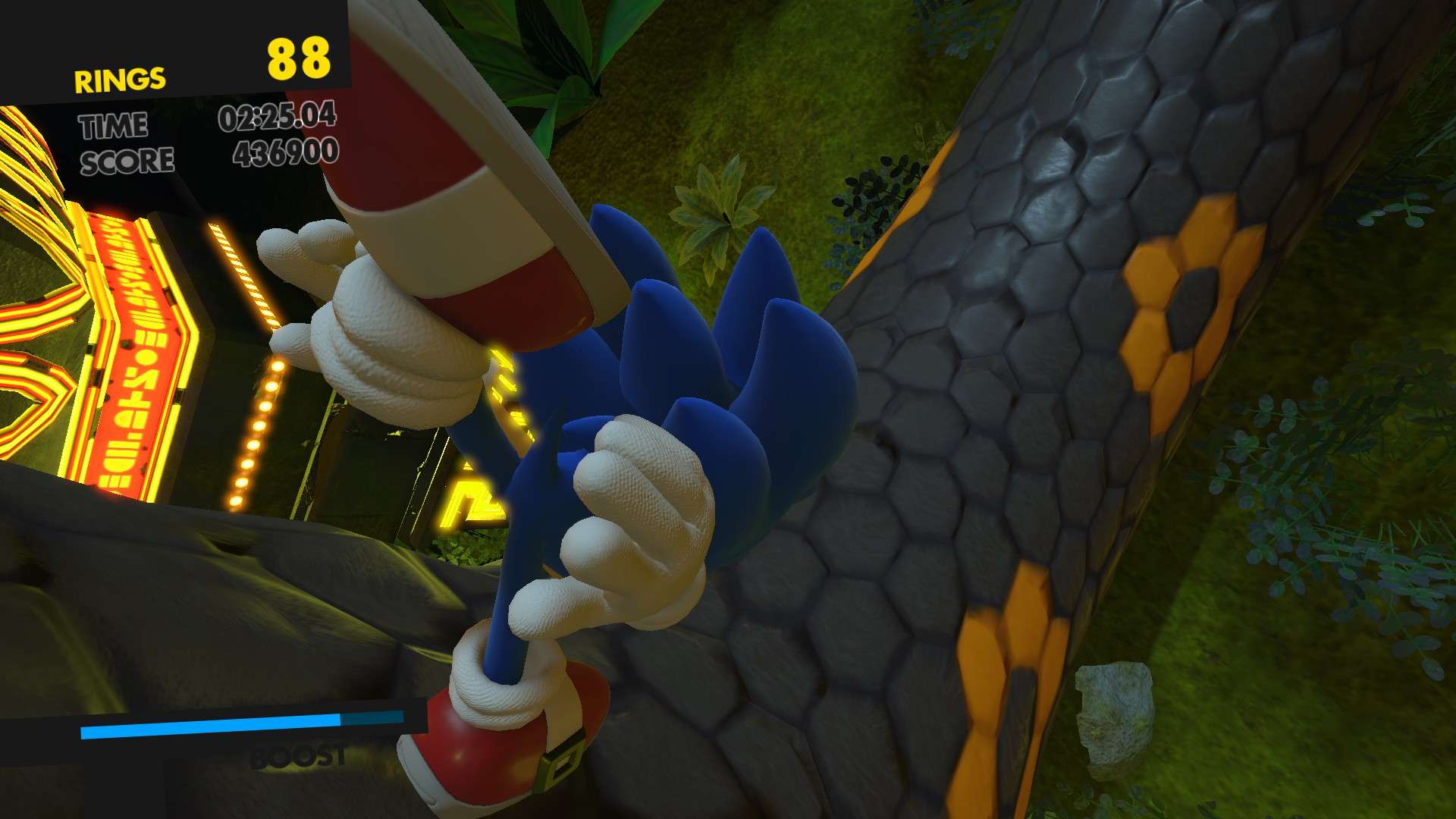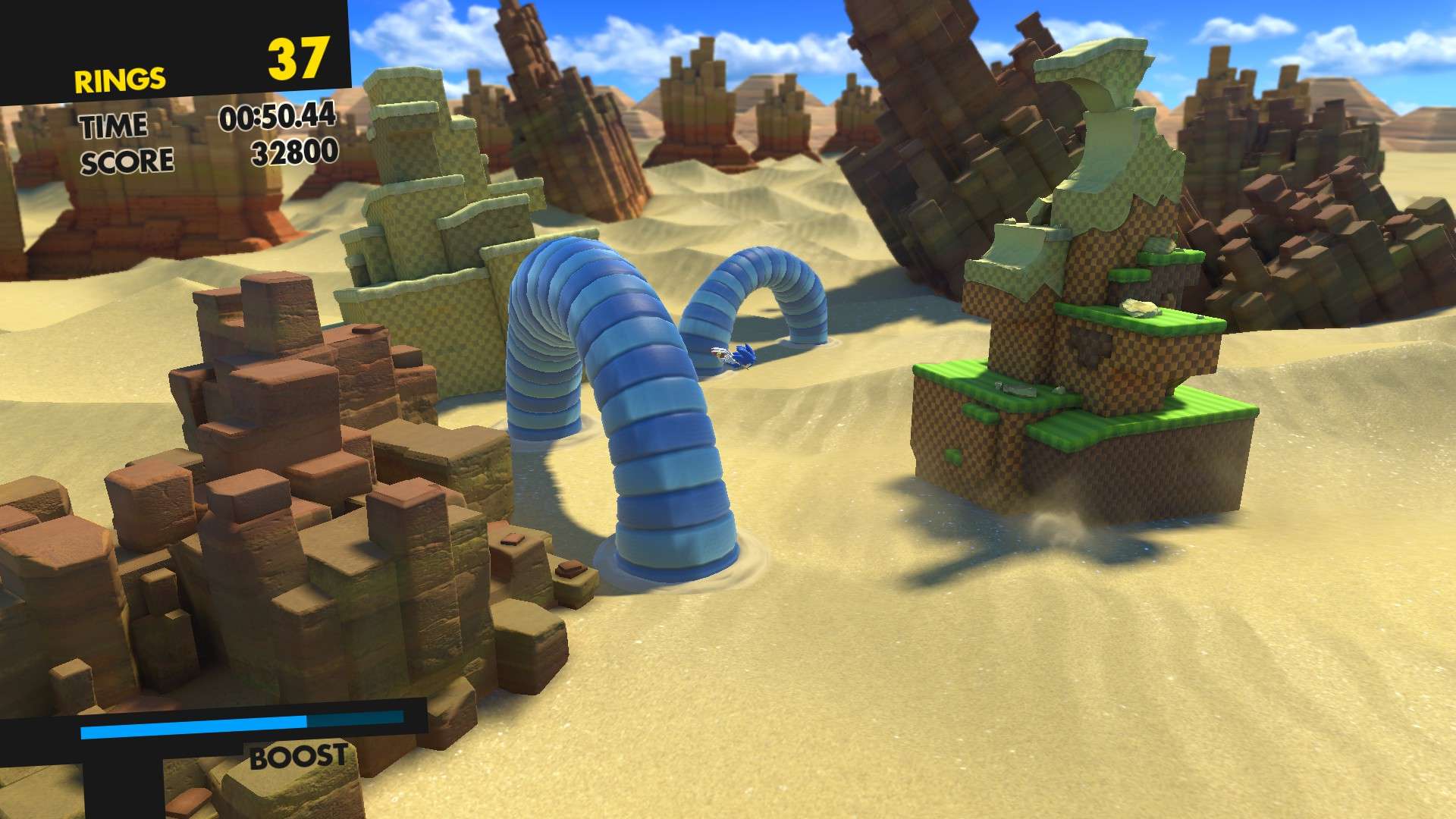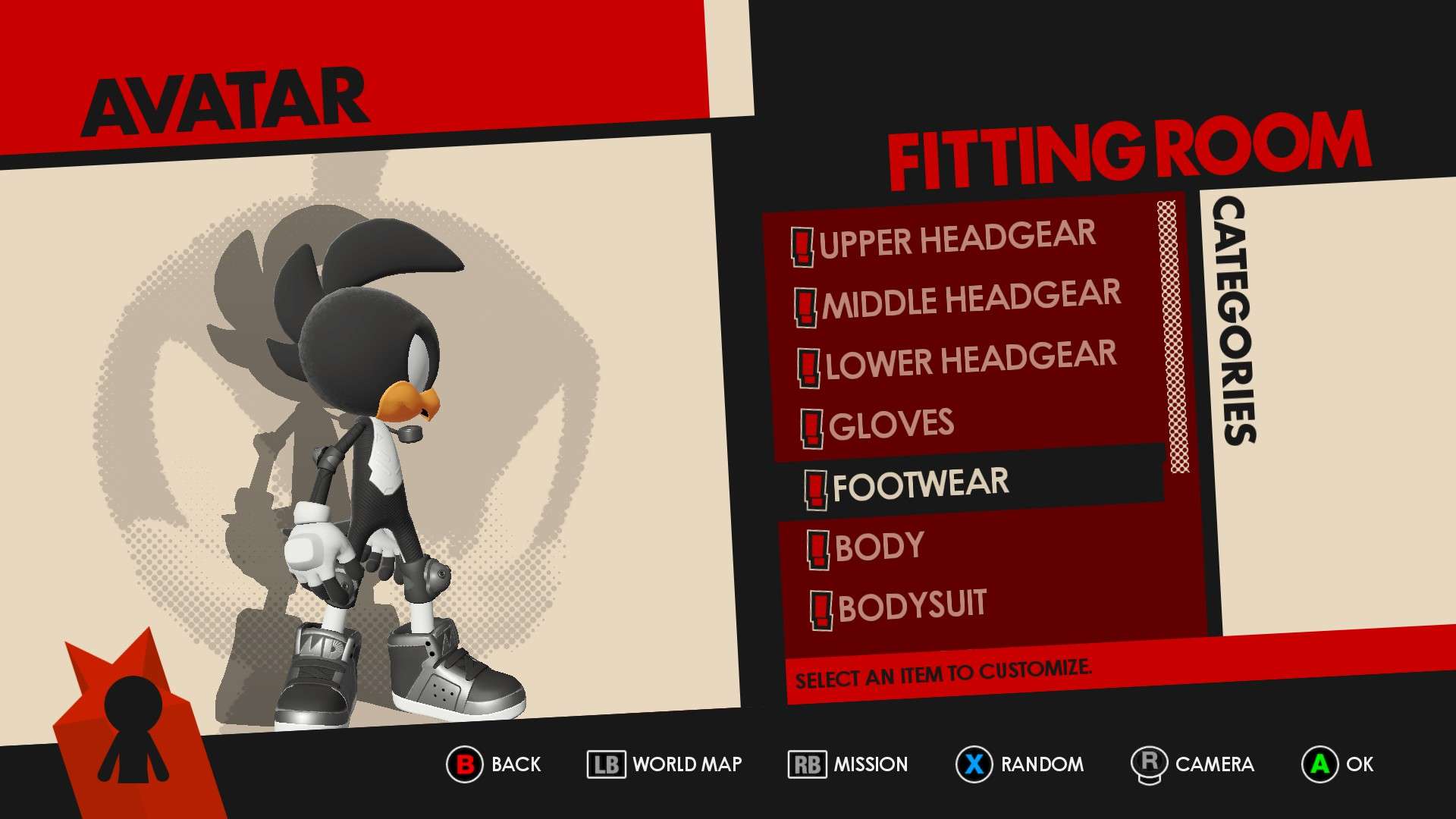
Sonic Forces PC Review
Boy, where do I start….
First of all I want to establish some context. Readers of this fine web publication may be unaware that I am a big modern Sonic apologist. I’ve refrained from reviewing Sonic games for the site because I frankly can not be trusted to. Although I was perfectly of age when the original Megadrive games came out, it wasn’t until Sonic Adventure launched with the Dreamcast that I latched on to Sonic games properly. So, talky, long legged Sonic and his cohorts are things I accepted a long time ago, while other long time fans had trouble acclimating to his new ‘tude and butt rocking musical sensibilities.
The series has certainly had its ups and downs – downs especially – but I’ve found things to enjoy in the majority of the games over the years, whilst clearly acknowledging their multitude of problems. I even pried some fun out of the barely functional Sonic The Hedgehog (2006), and when you finally tame the super jittery motion controls of Sonic & The Secret Rings and parse its obtuse loadout system, I think that game is buckets of fun. The level ”Pirate Storm” from that game is… arguably one of the coolest Sonic levels ever.
Now that I’ve flushed my credibility down the drain, let’s move closer to the subject at hand. But only closer! What do you think you’re reading, anyway? Some kind of a review of a game I haven’t even started talking about yet? Next stop, Sonic Unleashed! An amalgamation of Secret Rings‘ endless runner/Temple Run-like on-rails formula, the high speed portions of Sonic 2006, and 2,5D platforming portions akin to the Nintendo DS series Sonic Rush. They combined to form what is essentially an obstacle course type of experience, interspersed with free 360 degree platforming and more opportunities to influence the flow of a level – a more dynamic Bit.Trip Runner for lack of a better comparison.

Granted, the common complaint of ”boost to win” is fair, enemies being mostly decorative cannon fodder, but simply surviving and crossing the finish line wasn’t really the ultimate goal. The skill ceiling was actually pretty high if you wanted to experiment and polish your playthroughs of levels, and backed up by a decent ranking system and collectables, you were encouraged to. I thought the Sonic – or ”day time” – portions of Unleashed were truly exhilarating. The 360 and Playstation 3 versions especially, differing in significant ways from the more simplistic Wii version. But then you had the night time levels, and the infamous ”Werehog” – a creature Sonic transforms into, which turns more than half of the game itself into a punchy God of War light brawler.
People cite the inclusion of a Werehog as the problem with the game, but the issue for me was the very concept of splitting the game in two and making switching between the two halves mandatory. Multiple playable characters have been a part of Sonic games in the past, but the most successful entries have left engaging with them up to you. Sonic Adventure 2 forced three different characters and modes of play on you, rotating them in through no choice of your own, and after adoring Sonic Adventure – finishing it every way from Sunday with all the ancillary characters – I found the sequel outright offputting.
Sega’s rationale for these unwanted guest roles, commonly referred to as ”shitty friends”, has always been that the Sonic stages by themselves would make the game too short. And fair enough if that is the case, but making a game last by sprinkling its levels over what is essentially other, distinct games, is a clunky, inelegant solution at best. In isolation, the Werehog God of War clone was fine, but as a rude commercial break in the game you wanted to play, it became a big nuisance.

But things are looking up! Enter the game that figured it out! Sonic Colours, released in 2010 for the Nintendo Wii, uses the Sonic levels from Unleashed as a baseline, and takes inspiration from Super Mario Bros. 3, adding powerups called ”Wisps” that essentially stand in for Mario’s suits. The gameplay quirks afforded by said powerups, along with more verticality in the level design, added an element of exploration and substantial replay value to levels. This fleshed out the game enough that Sega felt comfortable allowing you to play as Sonic, and stick to the game’s core mechanics, for its entirety. Controls were readdressed, allowing for some welcome tweaks to under water movement and wall jumps. Sonic Colours immediately became my favourite 3D Sonic game by far. Spoiler alert: It still is.
Sonic Generations, the next game in the series, released for 360, PS3 and PC the year after, again lifted the underlying Colours formula – making it an enjoyable enough game – but took some significant design steps backwards, most notably removing movement options and for the most part doing away with the Wisps. It went back to a more linear, choose-a-path-and-stick-to-it level design, and again relied on splitting up the gameplay between Sonic and additional characters to pad the experience. Only, now he was his own shitty friend.
Because apparently Sega’s understanding of people not wanting to play as Sonic’s friends was that they would be totally stoked if they were all Sonics. Granted, playing as a ”classic Sonic” based on the Megadrive games made sense for Generations, which in itself was a fanservicey celebration of all eras of Sonic, and the two versions of the character bridged the gap between the old and the new. It didn’t change the fact that classic Sonic felt incredibly awkward to play as, however, with a sticky, artificial approximation of the physics from the original game. And more importantly, it was again an experience awkwardly spread across two games, where you were prevented from engrossing yourself in either.
And sadly, despite Colours being the better blueprint, Generations was the jumping off point for Sonic Forces. Yes. it’s true, at long last we’ve arrived at the game I’ve- uh… Been reviewing!

For all intents and purposes Sonic Forces is a direct follow-up to Generations, leaving the Wii U game Sonic Lost World as an odd offshoot and parenthesis in the middle – that I could, but won’t, go on about. Forces places you in control of modern Sonic, classic Sonic and a new, blank character – or ”avatar” – whose appearance, and to a degree abilities, you can customise. One could cynically say it’s a trinity of pandering to every possible demographic for a Sonic game. But I’m not going to say that, because I am not a cynical person.
I expected the avatar gameplay to be least sound part of the game, but it inherits most of its traits from modern Sonic’s gameplay, and you can occasionally find a nice groove using the various equippable abilities in tandem with the core movement options. Finishing levels unlocks more customisation items for your character, and I would be lying if I didn’t reluctantly admit that I found a certain appeal in dressing up my own Sonic fanfic person.
Modern Sonic fares the best, and feels like the most fully realised facet of the game, having been through four revisions over the years. When modern Sonic works, it’s a snappy, dynamic rush to the finish, whilst you make a lot of little decisions on the fly. Dispatching of a cluster of enemies by traversing them with the homing attack, in the process clearing a platforming segment – finishing off the final enemy by hitting B to slam into the ground, then X to boost off toward the next little platforming or action section feels good. It has felt good since Sonic Unleashed.

Classic Sonic was already a pale imitation of the Megadrive original in Generations, and without the updraft of nostalgia from recreated levels elevating proceedings, here the whole thing frankly just comes across as desperate and contrived. The release of the excellent Sonic Mania only hammers home the point even more that this feels absolutely terrible to play in comparison, and the ”retro” sound of his background tunes can’t veil the fact that without classic music to bounce off of, they’re just as hollow and uninspired as his presence in this game.
But all three characters are essentially equal in the damning presence of outrageously lazy level design. It’s here that Forces truly falls apart. The avatar stages are perhaps the most egregious, because had they kept their end of the bargain, two thirds of the game could have been decent, if brief. But all too often, the level design is so uninspired and rote that it is astonishing that any of it is meant to pass for the main, critical path content of a game. They’re all criminally short, and if you felt jerked between distinct games in previous Sonics, this game barely lets you get a feel for a level before it’s on to the next one.
In fact, the overall structure of Sonic Forces feels so scattershot and flimsy that you never get the sense that you’re truly playing the game. Content is so spread out over the different characters, and each individual level so short and simplistic, it just feels like a dizzying myriad of shallow, meaningless interruptions in a stream of cut scenes and text box prattle. I swear you spend more time sluggishly clicking through unskippable popups showing your avatar item unlocks at the end of a level than you do playing the game.

And let me tell you; I say all of this as somebody who is dangerously easy to please with these games. I’ve always been a fan of the rhythm and flow of the homing attack-centric Sonics, going as far back as the first Adventure, carrying me through dark times like Shadow The Hedgehog and into brighter days like Sonic Colours. Forces has impossibly short moments when it reminds me that it’s built on the backs of those games, and when it happens to play a catchy background tune and comes together for a fraction of a second, I do still kinda love it.
But it is baffling how much it gets in the way of itself – how much of it is simply in the way of itself – and how obscured its few inherited qualities are by the game’s complete inability to capitalise on them. Sega seem oblivious to what this style of Sonic game got right three games ago, and has doubled down on every single one of the things that started pushing it away from that sweet spot beginning with Generations.
I won’t pretend that Sonic Forces is a disappointment – it telegraphed its kitchen sink approach to content a long time ago. Desperately trying to please every kind of Sonic fan, it is every bit the mishmash of half realised ideas vying for your attention that it seemed like it would be. I guess I just never expected that their attempts to hold that attention would be so feeble.
